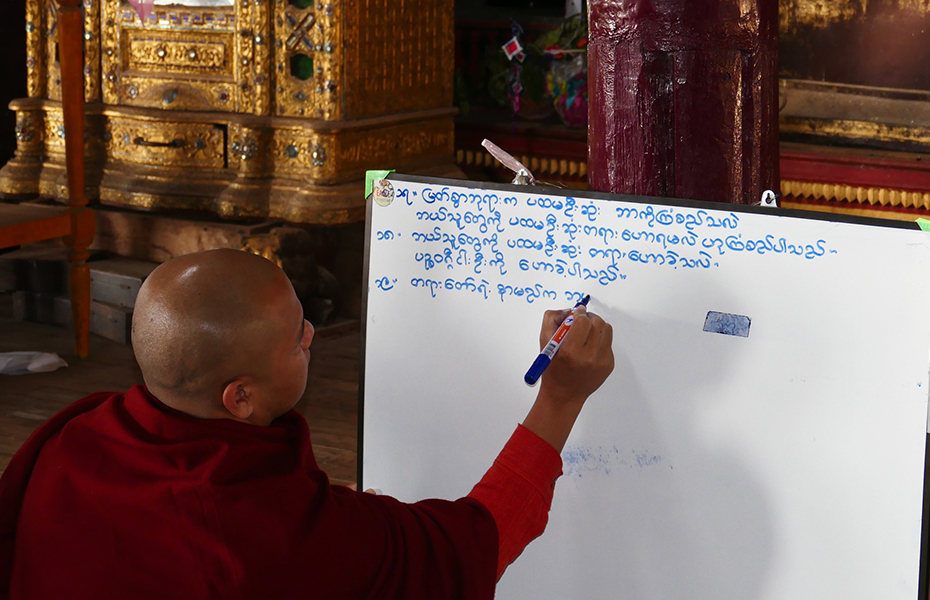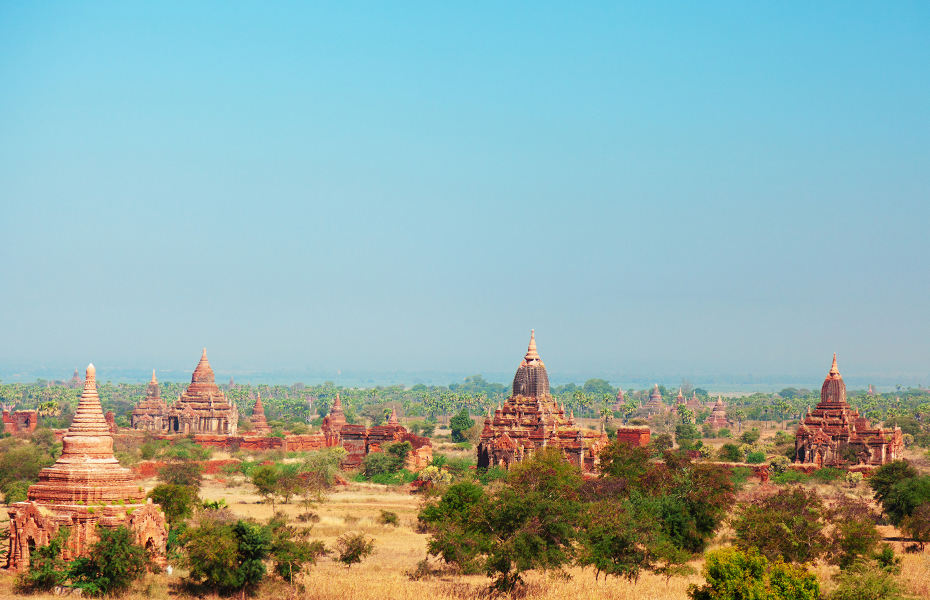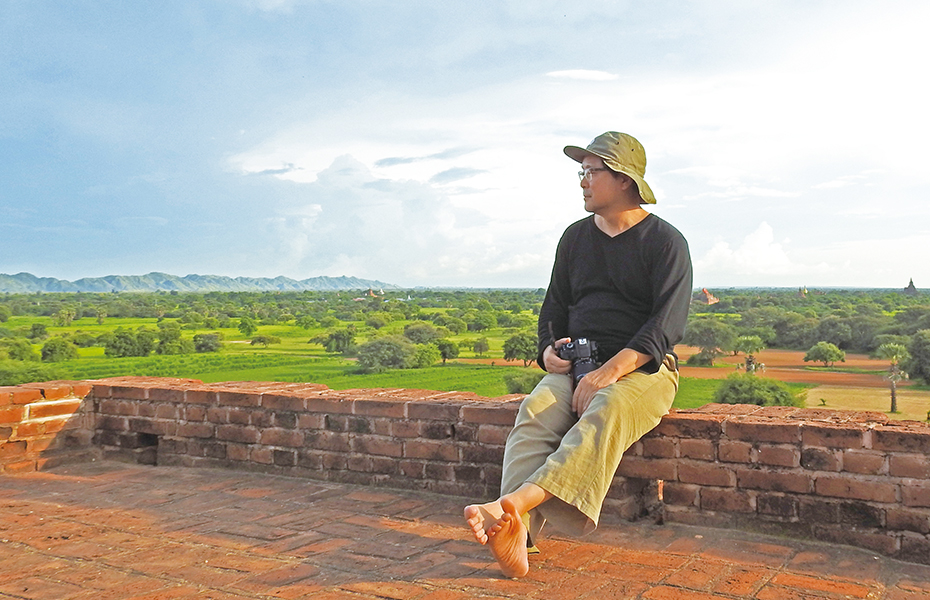This month, we met Professor Park Jang-sik, who has greatly contributed to active exchange between Korea and Myanmar through his love for the Southeast Asian nation and his profound understanding of various aspects of its history, culture, society, and economy. We hope that this interview will help our readers learn about the language, history, and culture of Myanmar and to think more deeply on the significance of the relationship between the two nations.
Through your appearances in the media and even through your words, it seems that you have a particular affection for Myanmar. We know that you’ve also made outstanding achievements in the research of the Myanmar language. How did your relationship with Myanmar originate?
I actually majored in an Indian language. But after the terrorist attack in Myanmar in October of 1983 at the Martyrs’ Mausoleum to commemorate Aung San, the Korean government established a national scholarship program to encourage professorships in the Myanmar language. I applied and qualified for the program and started to study the language at Osaka University of Foreign Studies. That was the beginning of my relationship with Myanmar.
Led by curiosity about a new language, I turned to the Myanmar language without hesitation, even though I had completed my master’s program in Indian. My family and professors strongly opposed my decision but I wanted to be a pioneer of this language that was new to Korean learners. I still feel excited thinking of my first years studying the Myanmar language and of what I can do to better the relationship between Korea and Myanmar.
Are there any unique characteristics of the Myanmar language that you could describe to us? It seems like the Myanmar language shares many similarities with Korean, Could you tell us a little about this?
The Myanmar language is a unique language that belongs to the Tibeto ― Burman branch of the Sino ― Tibetan language family, as well as having characteristics of an isolated language. It’s a tonal language with very unique sounds. But it shares the same word order with Korean, so it’s not very difficult for Koreans to learn conversational the Myanmar language.
There are some challenges, though. The Myanmar language uses variations of characters derived from the Pallava Grantha of southern India, and has vocabulary originating from Buddhist and Hindu ures written in Sanskrit and Pali. Also, foreigners often have difficulties with the big difference between colloquial and literary styles of the Myanmar language. But I think this is mainly due to a lack of research that clearly identifies the language’s grammatical structure. This is the reason why many people either misunderstand or find the Myanmar language difficult to learn.

However, as there are no honorific expressions in the Myanmar language, learners don’t need to bother with that aspect of the language. They only have to learn a few colloquial phrases. There are expressions used when speaking to Buddhist monks, but most foreigners will never have a chance to use them. And while dialects exist in all languages, there’s no “standard language” in Myanmar; almost the exact same language is spoken in each region.
Starting this month, the ACH newsletter will have a new section devoted to introducing readers to various ASEAN languages. This month’s language is the Myanmar language. Myanmar is often called the land of opportunity and, accordingly, interest in the Myanmar language is on the rise. Could you give us tips on how people might be able to easily engage with the Myanmar language, or how they might learn about it?
As I mentioned earlier, the Myanmar language has been less studied in terms of grammatical structure, like many other Southeast Asian languages. Compared with English or Korean, fewer studies have been carried out even by local scholars. So most foreigners need to learn the Myanmar language through expressions used in daily conversation. This causes them to learn the language in an unsystematic way that leaves them without a deeper understanding of grammar or the way the Myanmar language is spoken. This include the features of sounds and intonations unique to the Myanmar language, how they change (flap sounds, etc.), word formation, and syntactic and semantic structures.
Grammar is most important in learning any language. The English teaching method once used in Korean schools has caused a lot of misunderstanding about grammar. But grammar is fundamental in learning the Myanmar language, too. In addition, learners should engage in repetitive listening and speaking practice.

The basic language lectures that I offer through the K-MOOC and EBS the Myanmar language programs for beginners are available on the internet along with textbooks. There are also the Myanmar language language courses on YouTube and on overseas broadcasting companies' websites (VOA News, BBC, etc.) that can be used for various purposes.
Language and culture share a close relationship. Considering your great command of the Myanmar language, could you share your thoughts on the relationship between the Myanmar language and the culture of Myanmar? Or how that culture is reflected through language?
My major is linguistics, but the boundaries between disciplines have become vague nowadays. With the complexity of the modern social system, it isn't easy to understand a society by only delving into a few specific fields. For this reason, I try to stay interested in cultural phenomena in various areas including art, ethnicity, religion, and even politics and the economy.
Language is a very important element in any society and linguistic phenomena reflect the cultural characteristics of that language's speakers. Just as Koreans use Chinese characters, the people of Myanmar have been greatly influenced by Indian culture and use vocabulary originating from ancient Buddhist ure. For example, "challa" ("a very short instant") in Korean and "hkana" in the Myanmar language e have the same meaning and both have roots in ancient Indian language. The Korean words "su," "u," and "mi," used to indicate grades, were considered to have originated from Chinese words, but in fact they were also derived from ancient Indian language. The well-known expression "suvannabhumi" is Pali for "the land of gold". The combination of "su" and "vanna" ("thu" and "wanna" in the Myanmar language) denotes "gold" or "something with an extraordinary color". In Asia, Chinese is considered as a language that has a great cultural influence, but in fact, Indian languages have had their own deep impacts on Asian languages as well. In Myanmar, the people developed their own religious culture by borrowing from Indian culture. They also share many commonalities with Koreans based on similar religious traditions through Buddhism.
Many Korean companies are entering into the market in Myanmar and the country is becoming a popular tourist destination. How should we view Myanmar? What does Myanmar mean for Korea?
For the past half - century, Myanmar has been cut off from the outside world under the military regime. The country is now opening its doors and interacting with the rest of the globe. In fact, before the 1960s, Myanmar, which was then called Burma, was one of the richest countries in Asia. The first Asian Secretary ― General of the United Nations, U Thant, was from Myanmar, and the University of Yangon was the best university in Asia. The country has abundant natural resources and diversity in its geographical features, so there’s a lot of beautiful natural scenery and impressive Buddhist sites.

Myanmar is the only developing country that is not yet under the influence of the larger world powers, which is significant to Korea, a country that needs to continuously engage in exchange with other countries due to its own political and economic situation. In this respect, Myanmar is a nation with many potential opportunities for Koreans, and if Korea focuses on reaching mutual prosperity in its diplomatic approaches of Myanmar, it can be better positioned there than in other parts of Southeast Asia. Additionally, as many people in Myanmar love Korean culture and feel friendly toward Koreans, exchange with Myanmar can be more advantageous than it is with Korea's two closest neighbors, China and Japan.
We understand that you’ve studied Myanmar continuously since the 1980s. What is the current status of linguistic and cultural exchanges taking place between Myanmar and Korea?
Exchange between the two countries has just begun. Our nations hardly know each other and still interact with one another in a very unilateral way. Many people in Myanmar are enthusiastic about Korean pop music or dramas, though they know little about actual Korean people. It's now become easy to hear Korean being spoken in the country, though, and Koreans are generally very welcome, which can make Myanmar a favorable destination. But how well do Koreans understand Myanmar? And does Myanmar, which embraces Korean pop culture, know much about Korea itself?
In fact, the two countries have had few substantial moments of contact throughout their histories. So far, they've maintained a very superficial relationship. On the part of Korea, companies have advanced into Myanmar to find low-wage labor and economic profits, while from Myanmar, people are coming to Korea to find jobs. This is almost the total extent of current exchange between the two countries. Koreans learn the Myanmar language to work for Korean companies established in the country, and Myanmar people learn Korean to enter the Korean labor market. The relationship remains shallow.
Outside of economic activities, there is still no significant exchange between Korea and Myanmar. Cultural exchange is based on reciprocity. As there is still a gap in the economic level of the two countries, efforts to build mutual prosperity will allow them to reach a higher level of cultural exchange in a relatively short time. I think that developing a variety of features for tourists in Myanmar, which has a lot of tourism resources, can be a first step to building a better understanding of Myanmar in the minds of Koreans.
You’ve performed many activities such as interpreting for Myanmar state visits to Korea. As an expert on Myanmar, do you have any mid - to long - term plans for activities related to your expertise? Would you be able to share them with us?

While there is a need for multifaceted efforts to enhance the relationship between Korea and Myanmar, as a humanities scholar, I’m particularly interested in Myanmar’s unique cultural heritage, such as its historical records and murals. There are many sources written in the Myanmar language on gravestones and on different kinds of traditional paper including parabaik and pesa (palm leaves). No country in the world has as many records as Myanmar, or murals as unique. I’m sad that they are getting damaged and disappearing and I want to help Myanmar properly preserve and manage these valuable cultural assets. I’d like to refine various cultural projects carried out in Myanmar with the support of the Korean government to contribute to the development of Myanmar’s culture. I also hope that I can help in discovering excellent tourist sites and developing features for tourists in Myanmar. Alongside this, I’d like to continue to publish books and academic papers related to Myanmar’s culture and to present more concrete measures to achieve all these goals.
Finally, is there anything you’d like readers of the ACH newsletter to know about Myanmar?
Lately, there's been rapid progress in the relationship between Korea and Vietnam. The similarities in their situations and interests are accelerating the improvement of this relationship, which has attracted a lot of attention, including from the general public of both countries. However, given their geographical locations and historical relations, Korean and Myanmar are not likely to achieve such dramatic progress in their relationship.
Nevertheless, due to the economic structure of Korea, which is highly dependent on trade, Korea needs to exchange with other Southeast Asian countries besides Vietnam. For the moment, Myanmar is emerging as the most suitable partner with which Korea can build a win-win relationship. As soon as the current political instability in Myanmar is resolved, the nation will be able to achieve higher growth than any other Southeast Asian country in terms of its politics, economy, society, and culture.

In addition, exchange in the intellectual field should continue so that parents in Myanmar who are passionate about their children's education will choose Korea as a study abroad destination without any hesitation. I believe it is my mission to promote such exchange. The improvement of the relationship between our two nations should be based on reciprocity. Koreans have learned through history that a one-sided relationship doesn't last long. In this sense, it's necessary to establish bases like the ASEAN-Korea Centre in Southeast Asia to promote Korean culture as well as to help the people of Myanmar newly discover the values of their own culture and to take pride in them.
 KOREA FOUNDATION
KOREA FOUNDATION












